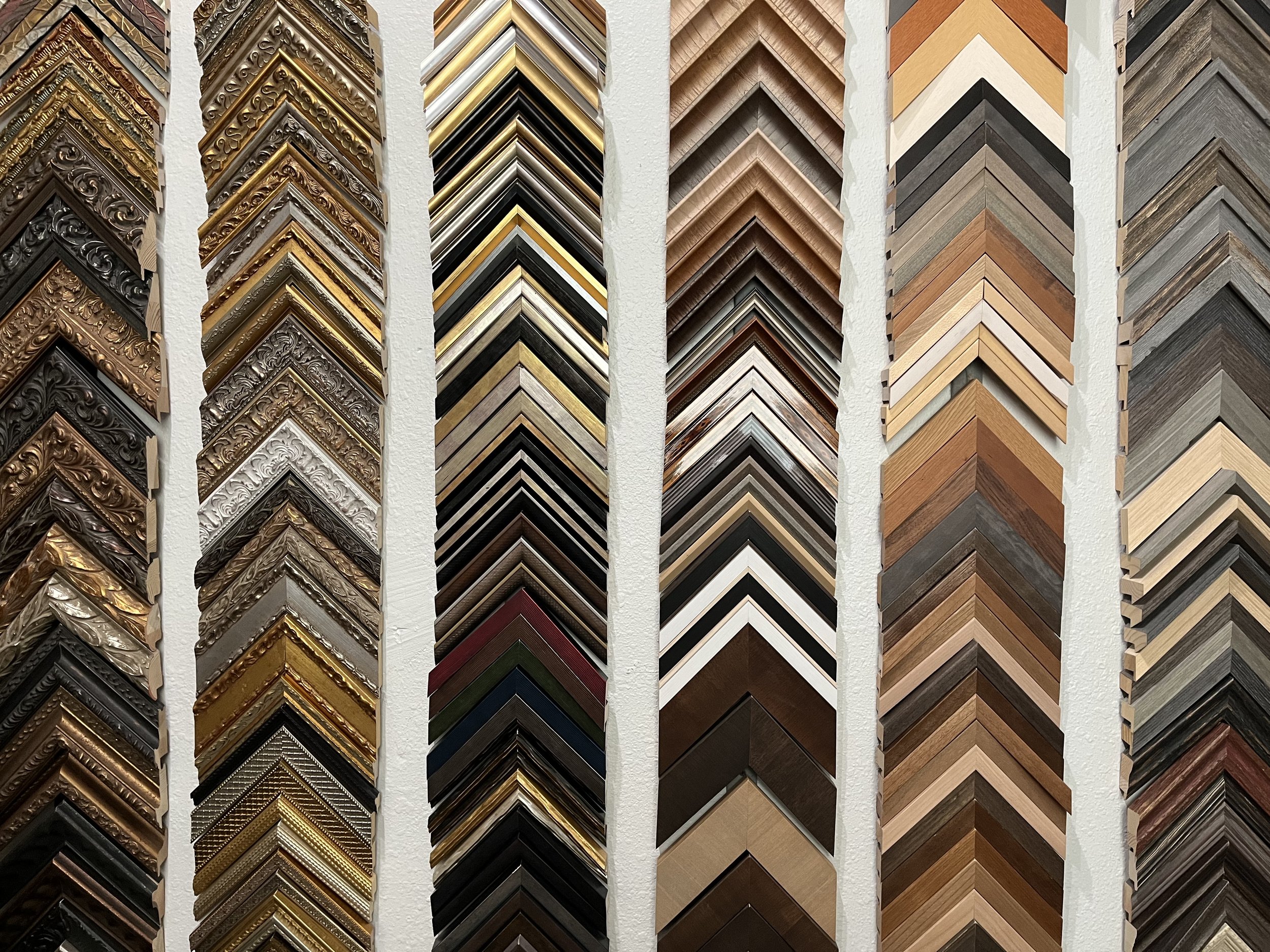
Policies & Frequently asked questions.
Our Storage policy:
We work hard to finish your pieces in a timely manner & kindly ask that you pick them up with the same urgency. Anything left in the shop 2 months after you have been notified of its completion will incur a $10 weekly storage fee until 6 months has been reached - at that time Magazine Street Framing is no longer responsible for your artwork and the pieces will be discarded. This is not meant to scare you... simply a reminder that space is limited in our beautiful building!
How much does a frame cost?
The price of your frame is determined by the size of your art and the cost of supplies (moulding, mat, glass, etc) needed to build your frame. We recommend coming to see us at the frame shop for a free consultation to get the most accurate quote!
Where are our frames built?
All our frames are built in house by our capable (and adorable) staff! We all go through extensive training in order to work with you and understand your style as well as produce top quality frames.
Why does it take so long for me to get my piece?
We order materials from various companies around the country as jobs are taken. Depending on the amount of jobs in our queue and availability of supplies, your finished piece could take between 4-5 weeks. Due to nationwide supply chain shortages and issues, moulding availability may vary. We try our best to keep our customers as updated as possible when mouldings are out of stock.
Do you have prebuilt frames?
No, we only do custom framing at our shop due to limited storage space. Our current turn-around time for custom framing is 4-5 weeks.
How do you adhere the pieces you frame?
We use an archival “T-hinging” method to attach paper pieces to their backing, which allows for paper to flex when in humid environments (ex: Nola lol). For particularly stubborn pieces, we will use an acid free double sided tape, with the customer’s permission.
For textiles, we use a tagging gun to attach the piece to its backing. This allows us to create an almost invisible mount without compromising the fabric with adhesives.
We have several methods for securing objects to mats and backing boards. If the object is a suitable shape and weight we may use fishing line or other strong wire to secure it. If the object needs something stronger or reinforcement in addition to the wire, we may (with the customers permission) use a heavy duty silicon adhesive.
Can you replace the glass in my frame?
Absolutely! We can replace broken glass panes in your frame or even upgrade your glass to one of our higher quality glass options (UV, nonglare, water white, museum).
Do you repair frames?
We are able to repair most frames as long as it is made of wood and all of the pieces are still intact.
Unfortunately, any damage that may occur from modifications you make to our frames (like attaching your own wire, etc.), once out of our possession, we are not liable for.
Are there size limitations?
We have limited space in our small framing workshop and may not be able to take on every large format job. We will take on large pieces on a project to project basis.
We are unable to get glass with dimensions over 40” x 60”. If you bring in a piece larger, you will have to get plexi glass. All plexi glass is custom ordered from an outside company, so it is possible for your order to take longer than anticipated.
Why is my paper buckling in my frame?
If your piece is experiencing waviness or buckling it is typically due to a change in temperature and/or humidity. Glass transfers heat faster than air does. When paper directly touches glass, it will react to humidity on edges before the middle, causing movement in the paper. Backing and paper do not expand at the same rate which can also cause issues.
Paper Buckling, or warping/bending of paper, mainly affects papers with the weight 300 g/m^2 (140 lb) or below. Inexpensive paper stock will likely experience buckling if not completely adhered to the backing (i.e. dry-mounted). Temperature and humidity fluctuate, even indoors, and like wood, paper expands and contracts with these changes.
Humidity aside, pieces that have spent long durations of time in a tube or rolled up will often times disperse that tension throughout the piece by buckling. To avoid this, try storing your piece in a cool, relatively dry and flat area (i.e. between books, flat files, or between acid free cardboard with something weighted on top). We recommend trying to flatten your piece out of the tube before bringing it to us if buckling is a concern.